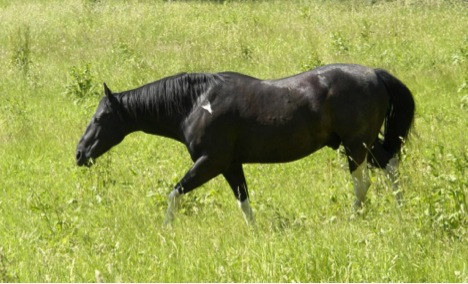Made of a tough protein called Keratin, horse hooves, similarly to human nails, are layered in horizontal sheets to protect the end of your horse’s legs.
Although this may sound simple to us, there is much more to this statement. Aside from its general function, hooves provide shock absorbency and traction safety, as well as offer great ground support to equines.
Hooves minimize any possible damage that could split the hoof in the event of a crack. A broken or swollen hoof must be immediately treated to prevent further damages, pain, inflammation, infection, lameness and even laminitis or navicular disease.

Here are some tips how you can keep in check and care for your horse’s hooves:
Daily Care Tips
Regularly pick out your horse’s hooves. Stones, dirt, germs, bacteria, and small objects can easily get caught in the soles while riding. The most important thing to do is to remove any dirt before and after a ride.
Bruising is also a very common problem which may not be easily recognized for days after the incident. Most bruises will show up on the sole, but it is also common to see bruises on the quarters, the toe, and the frog of the foot. Watch for bad steps, heat in a foot by touch, any sensitive areas of their legs.
Run your hand through the legs to check for bruises, brush off the sole, pay attention while trimming and shoeing your horse.
Inflammation and small infections can turn into a chronic problem if it’s left untreated. Make sure to address any inflammation or swelling on legs and hooves. The lower legs of young horses tend to swell more often, hence, keep that in mind while grooming foals and yearlings.
Make Plans with Farrier
Perform regular check ups with a farrier and veterinarian. Make sure you trim horse’s hooves and recheck its sizes every four to six weeks. Replace hooves if necessary.
A skilled farrier can advise you of the different techniques for loosening, removing and replacing the hooves. The farrier can also tell you how to improve break-over, deal with minor hoof problems, and adjust horse hooves and shoes. Ask questions.
Consider Different Types of Horse Shoes
Different types of horse shoes and boots are used for different purposes. Here are some important ones to know
- Shipping boots are like long boots. These are used to protect horse’s feet from wet lands and mud.
- Bell boots have bands that protect horse’s feet while riding. Most of the race horses wear bell boots. The backside design of these boots protects the horse heels from an injury.
- Polo wraps and splint boots are bogus boots, which are used to cover the lower leg of a horse. These boots protect cannons, bones and tendons.
- Therapeutic boots allow some space for heating or icing. These boots are used to protect horse’s feet and legs from further injuries by keeping the affected areas warm or cool to reduce inflammation.
Also, we suggest to find a good blacksmith. Many blacksmiths offer customized shoe services. With the instructions and size charts from your farrier, it will be easier to order customized boots for your equine. Test the boots for at least three days.

